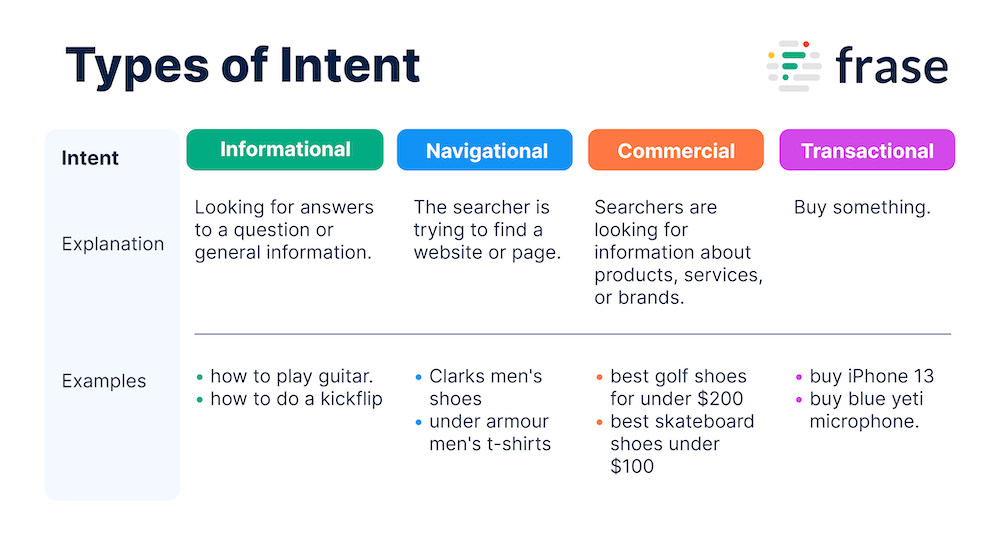Tube Rank: Your Guide to Video Success
Discover tips and insights for optimizing your video presence.
Cracking the Code of Search Intent
Unlock the secrets of search intent to skyrocket your traffic and boost your rankings—discover how to captivate your audience today!
Understanding the Different Types of Search Intent: A Comprehensive Guide
Understanding the different types of search intent is crucial for optimizing your content effectively. Search intent can be categorized into four main types: informational, navigational, transactional, and commercial investigation. Each of these types serves a unique purpose in the user journey. For instance, informational intent is when users are seeking answers to specific questions, while transactional intent indicates that users are ready to make a purchase. By identifying the search intent behind keywords, you can create targeted content that meets your audience's needs.
To delve deeper into the various types of search intent, it's important to analyze user behavior and the specific queries they use. Here’s a breakdown of how to align your content with each type of search intent:
- Informational: Create blog posts, guides, or tutorials that answer common questions.
- Navigational: Ensure your brand's website is easy to navigate and contains clear directions.
- Transactional: Optimize product pages with compelling descriptions and clear calls to action.
- Commercial Investigation: Provide detailed comparisons or reviews of products to assist users in their decision-making process.

How to Align Your Content Strategy with User Search Intent
Aligning your content strategy with user search intent is essential for maximizing your website's effectiveness. Start by understanding the different types of search intent, which generally fall into three categories: informational, navigational, and transactional. Informational intent involves users seeking knowledge or answers to their questions, while navigational intent pertains to users looking for a specific website or page. Transactional intent is when users are ready to make a purchase. By analyzing your target audience's behaviors and preferences, you can create tailored content that meets their needs at each stage of their search journey.
Once you have categorized the different types of intent, leverage tools like keyword research and analytics to discover what phrases and terms your audience uses. Incorporate these keywords naturally into your content, ensuring that it remains engaging and informative. Additionally, consider using content formats that resonate with your audience, such as blog posts, videos, or infographics. Remember to continually assess and adapt your strategy based on performance metrics to ensure you are effectively addressing user search intent and providing valuable content that keeps your readers coming back.
What is Search Intent and Why Does It Matter for SEO?
Search intent, often referred to as user intent, is the primary goal that a user has when entering a search query into a search engine. It can be categorized into four main types: informational, navigational, transactional, and commercial investigation. Understanding these categories helps content creators and SEO specialists tailor their content to meet the specific needs of users. For instance, if someone searches for 'best running shoes,' they likely have commercial intent, indicating they are looking to make a purchase, while a search for 'how to tie running shoes' demonstrates informational intent. Ignoring search intent can result in content that fails to satisfy the user's needs, effectively wasting both time and resources.
Recognizing and optimizing for search intent is essential for effective SEO because it directly impacts the visibility of your content. Search engines like Google use complex algorithms to rank pages based on how well they match a user's intent. When your content aligns with the user's search intention, it enhances the likelihood of achieving higher rankings and, consequently, increased organic traffic. Regularly analyzing search intent not only improves page performance but also provides valuable insights into what your audience is truly looking for, allowing you to adjust your strategy and create more relevant and engaging content.